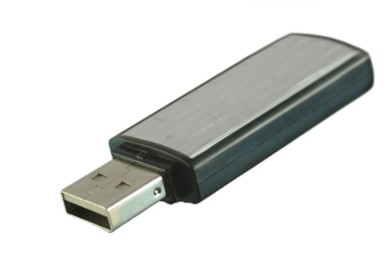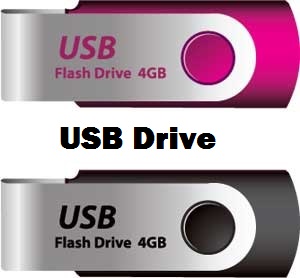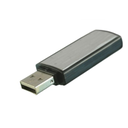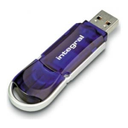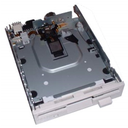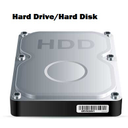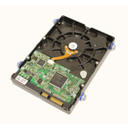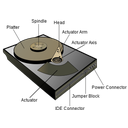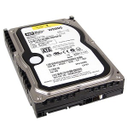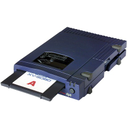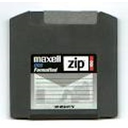Secondary(auxiliary)storage devices and media
There is need to have an alternative long-term storage location for data and information other than the main memory.These alternative storage devices that are not part of the main memory are called secondary or auxiliary storage devices.These devices are not directly accessible by the CPU. Secondary storage devices that are not housed inside the system unit and hence can be carried around to be used with another computer.These are called removable storage devices and media. In order to read or store data from a storage media,a device called a drive is required.
Secondary storage devices can be classified according to the technology used to record data.The technology could be magnetic or optical.The data and instructions held in these devices must first be moved into RAM before processing.
Removable storage devices
Magnetic tapes
A magnetic tape is a ribbon of Mylar(plastic-like)material coated with a thin layer of iron oxide.The tape resembles the music cassette used in home tape recorders.
In order to read/write data records on the tape,the tape must be inserted in a tape drive that rotates the tape allowing a read/write head to perform the read/write operation.
Most computers today don't have tape drives because of the advent of better storage devices.Examples of magnetic tapes include:reel to reel tapes,cassette tapes and cartridge tapes.
Disadvantages of using magnetic tapes
1.Magnetic tapes are slow because of the linear storage of data records on the tape.This means that you have to access the proceeding records before you get the required.
2.There is a space between successive data records called inter-record gap (IRG), which results in wastage of storage space.
Magnetic disks
They have a magnetic disk platter that stores data.Examples of magnetic disks are floppy disks(diskettes),zip disks and jaz disk.
Floppy disks
A floppy disk or simply a diskette is made up of a small flexible round disk coated with iron oxide.This disk is covered with a plastic protective case.Floppy disks are portable thus making them the most widely used type of secondary storage device.
Floppy disks are inserted in a floppy drive,which has a read-write head that runs over the magnetized spots that contain data.Floppy disks come in different sizes with different storage capacities.Initial floppy disks were large in size but with smaller
storage capacities than the presently available 3-inch which has a maximum storage capacity of about 1.44 MB.
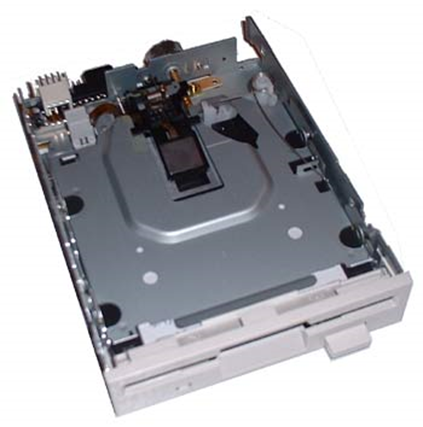

Zip disks
These are high capacity disks that resemble the floppy disks.They are,however,slightly larger and thicker in size.A zip disk can hold as much as 250 MB.Zip disks mostly come with separate-portable external zip drive.


Jaz disks
These are small portable disks with high storage capacity of about 1 GB to 2 GB.They are used for storing data that require large storage.Like jaz disk comes with a portable jaz drive.
Care of magnetic storage media
To care for magnetic media the following rules are to be observed.
1.Do not expose them to strong magnetic fields.This would erase the magnetically recorded data on the disk.Hence do not carry magnets to the computer room.
2.Keep magnetic media away from excessive heat because heat energy weakens magnetic medias ability to store data.
3.Do not drop the disk on the ground.
Optical (laser) disk
These are disks on which data is recorded using a laser beam.A laser beam is a very strong concentrated light.The beam bums very tiny holes(pits) into a thin shiny surface to record data.Likewise a laser beam in the optical drive is also used to read, record data on the disk.The advantages of optical storage media are:
1.They store very large volumes of data.
2.Data stored in them is more stable and more permanent than the magnetic media.
Examples of optical storage disks include:LS-120 super disks(SD),compact disks (CDs),digital versatile disks(DVD),optical card and optical tape.
LS-120 super disk
This is a diskette that resembles the 3½-inch floppy disk but uses optical technology instead of magnetic technology to record data.It has greater capacity of storage and greater speed of data retrieval.The LS-120 drive can read and write both the 3½-inch,
1.44 MB floppy disk and the 120 MB super disk.
Compact disks (CD)
Compact disks hold large quantities of data and information.One disk can hold as much as 700 MB.They are mostly used to store data and information that requires a lot of space such as video clips,software,sounds etc.
Currently compact disks are available in three forms namely:
Compact disk-read only memory(CD-ROM):These are the type of compact disks which,when data is recorded on them,one can neither change them,nor add anything on them.They are mostly used to store music recordings.
Compact disk-recordable (CD-R):These compact disks are initially blank but with a drive called CD-Writer,the user can record data,programs or information on it.However,once data has been written on it,one can only read but not change it.
Compact disk-rewritable (CD-RW):Unlike the CD-Rs,these types of compact disks allows the user to record,erase and rewrite new information just as one would with floppy disks.
NB:Both CD-ROMs and CD-Rs are referred to as WORM (Write Once Read Many) because they allow the user to record data on them once but read the data as often as necessary.
Digital versatile disks(DVD's)
Digital versatile disks also known as digital video disks resemble compact disks in every aspect but the only difference is that they have higher storage capacity of upto 17 GB which is equivalent to approximately twenty six 640 MB CDs.They are suitable
for recording motion pictures such as video because they offer better sound and picture quality than the CDs.


Optical card
An optical card resembles the magnetic-ink character recognition card but instead of having a magnetic stripe,it has an optically recordable stripe that stores information.These types of cards are mostly used in banking and other business organisations to
record customer details.
Optical tape
This is similar to a magnetic tape only that data is stored on it by using optical technology.
Current and emerging trends in laser technology
The advances in optical storage,digital video clips,voice and sound synthesis have formed the basis for modern multimedia technology exploited to develop multimedia computers.A multimedia computer does not only display text but can also allow the
user to have sound playback and watch videos and pictures.A typical multimedia computer must have the following minimum requirements:
1.A video graphic array or higher super video graphic array(SVGA) graphics card and monitor.
2.A sound card.
3. Compact disk or digital video disk drives.
4. 32 MB RAM or higher.Lower memory is bottle neck to performance.
Today computers can be used to tune to any of the favorite FM or TV channels as long as an FM/TV card is installed in the computer.
Fixed storage media
These are the storage devices that are housed inside the personal computers system unit.An example is the hard disk.However it is important to note that some hard disks especially those used in small computers such as laptops are removable.
The hard disk
The hard disk,also known as the Winchester disk is a sealed unit in which is shiny, rigid magnetic disks or platters that are arranged vertically on a common axis as shown below
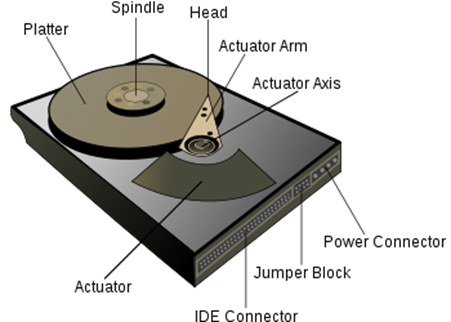

How the hard disk stores data
Each disk has two read/write heads that read/record data on both sides.The surfaces of each disk are divided into tracks and sectors like those of a floppy disk.Tracks along the common axis forms an imaginary cylinder.Therefore the term cylinder is sometimes used to indicate the number of tracks on one surface of a platter.For example if you say that a hard disk has ten cylinders then each disk has ten tracks on one surface.If the disk has ten platters then one cylinder will have twenty tracks:
As the disk rotates,the read/write head moves in and out over the surface to record or read data.

Hard disks have gained widespread popularity because:
1.They provide permanent,cheap and large storage capacity that is re-writable. For example a computer can have one hard disk of 40 GB storage space.
2.They are very fast compared to other secondary storage devices in terms of data transfer.
Care of the hard disk
Because of the high rotational speed of the disks,it is important to observe the following precautions to avoid permanent destruction to the hard disk also called disk crash.
1. Keep the disk away from smoke and dust.Dust and smoke particles can cause damage to the surface of the disk by scratching it as the head attempts to read data.
2. Switch off the computer using the correct procedure.This allows the read/write head to move off the disk surface before power is switched off.Improper procedure would risk heads crashing on rotating disks hence scratching them.
Emerging trends in storage devices.
Because of need for vast storage prompted by today's massive data processing applications and need to carry a lot of information in easily portable storage devices,more advanced and reliable storage media are emerging.One good example is a storage device called the flash disk that is small in size (about 5 x 2 cm)but has capacity to store over 600 MB ( equivalent to approximately 400 floppy disks!!).The figures below shows diagrams of flash disks.
